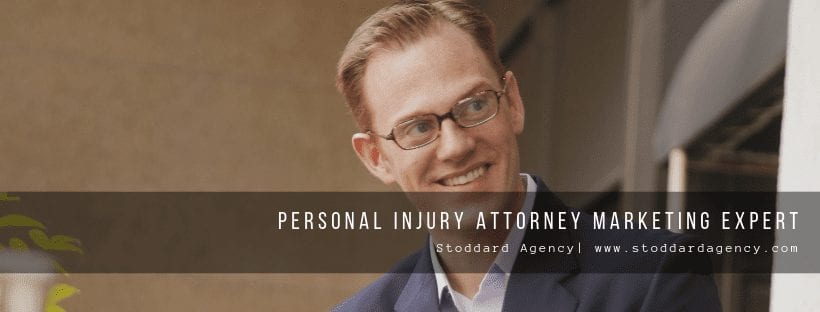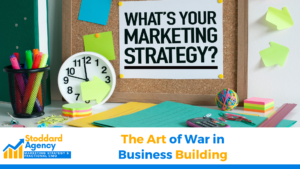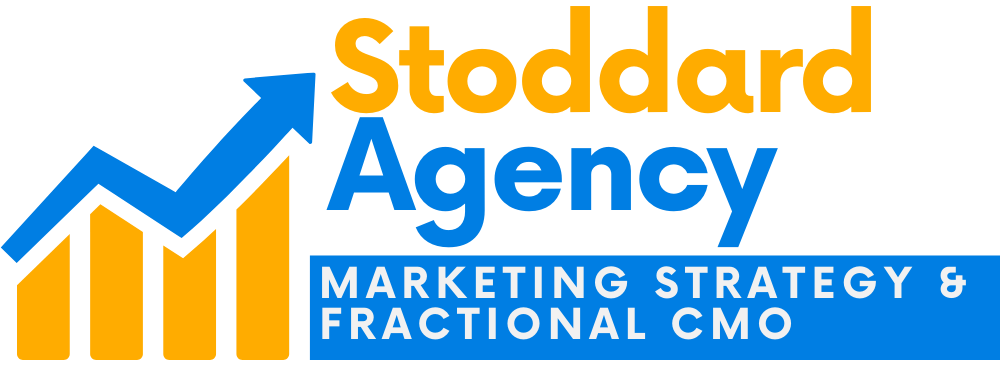As a personal injury attorney, how will you craft your market niche and reach potential clients before the competitor does? How will you stay on top of your potential client’s mind and make them reach out to you first when accidents happen, and not just appear as a random Personal Injury Attorney found in Google Search?
Intent-based branding with

Creating Content For Personal Injury Attorneys Who Want to Brand Themselves
I wanted to make a video today after meeting with a client, and before I lost the thoughts, I tried to get it here to you as quickly as possible. It has to do with creating content for personal injury attorneys who wish to brand themselves and market and advertise, but they’re confused. I think this is everybody. So you’ll probably relate if you ever have a copywriter or a marketing person come to you and ask, well, “what is your target market?” Let’s describe them, your ideal target market. Let’s get into the demographics and all that. You kind of look at them as an attorney and go, “this is ridiculous’! Because it’s an event based situation. If for personal injury, like almost every time because someone’s in a car accident or something happens to them or somebody does something to them that was not predicted.
Well I guess for some people you could say might be able to be predicted, but in most cases, it’s an event based occurrence, and it’s an event-based trigger that creates the need for the customer.
1. Identifying Your Target Market
So how do you figure out your target market? On average they ended up a certain age maybe for you. Perhaps if you study your customers carefully, you find out that there are more male than female or female than male and they’re 25 to 45, maybe, maybe not. Perhaps it’s solely based on that event and whether or not you were there first. So my first point is that one of the most critical aspects is just being FIRST. Now that means that you have to be there when the person is looking, and most purchases nowadays are made online. Therefore the first person to be there in search results is going to have a considerable advantage. If you’re relying on Google Adwords and you are held hostage by the supplier who can raise prices and your competitors are bidding for keywords, naturally raising rates and so you need to look for other ways to do it than just buying the traffic.
Now, knowing whom to target is huge because if you know the people that are in the market, you can focus your ads on them rather than on everybody – in other words, look for the needles rather than the rummage through the haystack, which is possible, through in-market lead programs, and technology. It’s going to be possible in the future.
2. Establish Relationships With Your Potential Target Market
However, what about when you want to be there before an accident happens, which brings us to the concept of branding. Now, most attorneys can’t afford to do generic prominent company type branding where you’re just blasting your message out there; it is costly. I’m sure you’ve done it. You’ve ever had a TV commercial or radio or commercial you’ve advertised on the side of a bus. You’ve done that generic general branding. Just being out there in front of people hoping that when they finally do need you, they remember, chances are slim.
The recency and frequency are difficult to pay for it. It’s costly. Even if you do, chances are you’re advertising for your competitor because when they finally do think of it, they can’t remember you, but will remember that you were on a bus and they call somebody else. When that person says, “Hey, how’d you hear about us?” They say “I think I saw you on the side of a bus.” No, they saw the competitor on the side of the bus, and then they went to Google and Google took them to a different page. So that’s an issue. However, there’s gotta be a way to at least become top of mind so that they do remember you. I think it’s intent based branding, which I’m borrowing from Frank Kern, by the way. Awesome dude, buy his stuff.
He’s amazing. I learned a lot from him, but I’ve learned that you can’t just take the concept and expect it to work magically for you. You have to correctly apply it to individualize and customize it for this industry. So what intent based branding is, in my opinion, Frank might disagree, but it’s the idea of when someone intends – interested in what you have to offer, that you will brand only in front of them. It also could be flipped around is your intent is branding in front of people that are a likely a good fit rather than just anybody. So if you consider those two ideas, you can see how this is much more cost effective. Because if I show my message in front of people that potentially are interested already, then I’m not wasting ad spend. Okay? So we got that out of the way.
3. How Do You Create Content For Your Intent-Based Branding?
What kind of content would you put in front of people to get them to know you like you and trust you? In other words, what you need them to do to want to do business with you is know, like, and believe you. It will help if you build credibility and authority with these people. Because at one point they may have an issue because they might be an idiot like me who’s recording something while driving, although, I’ve got my hands on the wheel and it’s hands-free by the way. I’m watching the road 99 percent of the time, probably more than most people. Like what kind of content?
Because you can’t just say, look at me, look at me, look at me. It gets annoying. Pisses people off if they see you all the time and they don’t need you. It’s not relevant to them. Facebook and Google are relevancy platforms. They want to know that their ad is relevant to people because if you show them something that they don’t like and then they stop using it, that hurts their brand. Facebook and Google, right? So they want to reward you with a lower cost per click by having things that people want to see.
Well, what do you do? Because they don’t care. I used to hear this all the time, I would go into an attorney office, and somebody in the office would say, well, yeah, but I don’t go to Facebook, or I don’t go to any of these platforms when I want an attorney. I either get a referral or I go to Google. True. That is what you do at the end at the very last step. Who are you more likely to go with the one who has been in front of you more often and more recently and who’s not annoying, whom you like, and you’ve grown to know, like and trust or the random person you found on Google that’s completely cold. You have no clue about who they are, this attorney; you have no idea.
You’re more than likely are going to go with the one that you have at least a little increment of familiarity with, and they can’t be annoying. So what do you do? The key is intent based branding with education-based marketing. In other words, things that are interesting, relevant to the potential viewers or the potential client before they become a client or before they need your services so that when they are looking, they’re interested. Well, the way to do that is by giving them relevant things.
Well, what would be relevant to them? Well, let’s think like they are, if you, assuming you have some statistics like you know, age and the typical target market who they might be, you could use that to your advantage to tailor some of it, but let’s say you have no clue yet and it really could be anyone in your mind. Anybody, well, if that’s the case, it really could be anybody then what you really ought to be thinking about what is it that the person might be interested? Well, the average person is interested in things that are related to what you do as an attorney. They’re concerned about, what would I do if something were to happen? You know, like even if I’m not in a car accident, I might be curious about what would I do if it were my family member.
It might be even fear-driven, you know, the statistics on teenagers getting into car accidents. Ridiculous. You could also target parents with teens and with video content like this or something written. It’s straightforward. It’s just, “Hey, do you know what you would do if your teen were in an accident, here are five tips that you need now.” Now is everyone going to want to see that? No, but it wouldn’t be relevant to somebody whose teenager just got the driver’s license. Right? So that becomes a related content. So now we’re not beholden to waiting until the person has the car accident and then fighting for that lead with all of the other attorneys. Everybody’s battling for that lead. Everybody’s right there. That’s the most expensive bottom of the funnel leads you can get, but near the top, you’ve got people might be interested in learning about what you know that you could develop a relationship.
Now, is this hard work? Yes. Does it take time? Yes. Is it expensive? Not necessarily. If you do it wisely if you target to individual sub-segments of the market and give them relevant content, you can start doing that, and you can start today even if you didn’t pay to boost a post on Facebook or which would be the best way to do it. You could also begin with a little bit of organic, creating some content like this a little bit at a time. Every once in maybe once a week, once a month, something that you’re putting out there in written or video and then begin getting that out there and your social media content and you’d be surprised at the leads you can get. People will start getting to know you and then once it is time you’re there.
You can also use this content in the battle of getting the bottom of the funnel leads. Because if you have all these different people you could choose from, and you have a choice of getting somebody whose only saying, free consultation, free consultation, you also have that, but you also have some other link that’s available to the potential customer, a potential client. Other material out there, it’s showing different sides of you. You become omnipresent. You become everywhere in the marketplace to the people that are interested in what you have to offer over time. Now, again, this is not a short term, quick fix, this is a longterm plan. This process needs to be a part of your content strategy. It needs to be a part of your social media strategy, needs to be part of your SEO Strategy and have your team members alerted to this.
The easiest way to do it is to create a content calendar, create a marketing calendar. All that it needs to be as the categories of the type of stuff you’re interested in doing online, offline, and internal — those three major categories. Internal activities would be stuff that you would do to generate referrals from your existing clientele or maybe even within your office, to motivate in morale. However, online is what mostly what we’re talking about here and every week or month. You can come up with a topic that you would like to talk about that is relevant to at least a segment or a subset of your potential audience. Create the content and then have your SEO team and have your editor take the material right out of a video transcribe it, and edited for you and use it and repurpose it in different platforms. The number one key I can give you to creating content, getting to the lead before anybody else, getting to the lead faster, using education-based material that is targeted and relevant to sub-segments of your potential market. Maybe you’ll find things that are relevant to everybody too in that. There’s your tip of the day. I hope that helps guys. Good luck with that. We’ll talk to you next time.





